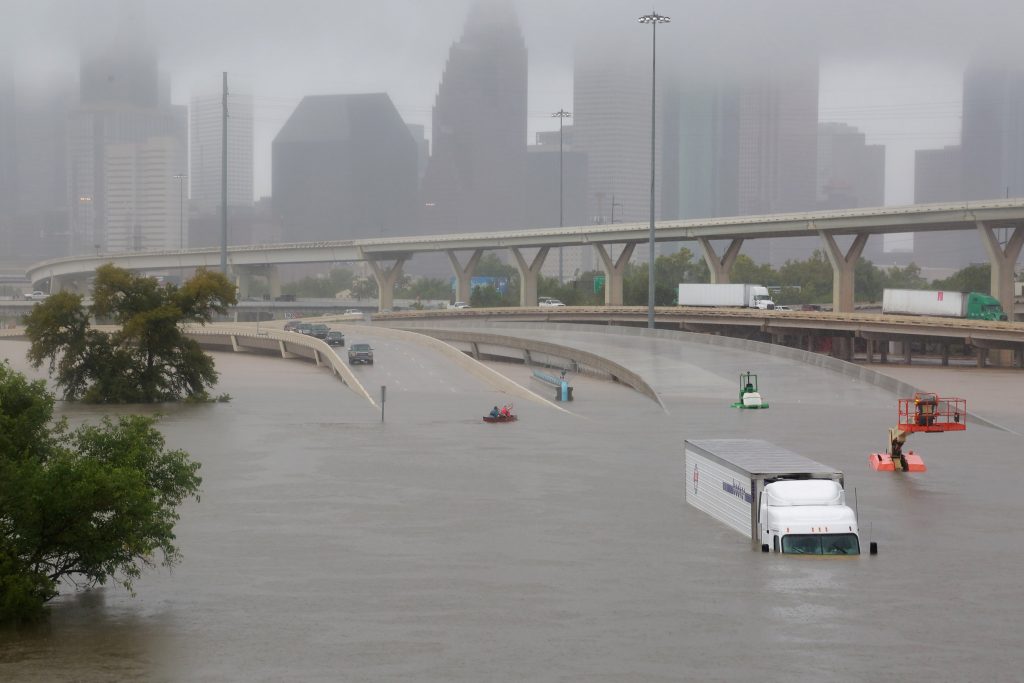Thursday, October 5, 2017
(October 5, 2017) — Hurricane Harvey left many in the U.S. propane industry with hopes export capacity affected by the storm would be thwarted to a level to allow primary inventories to reach adequate volumes in time for winter, observes the National Propane Gas Association (NPGA). However, Energy Information Administration (EIA) stock data and export figures from IHS Waterborne show the inventory build is not accelerating at a pace necessary to reach adequate levels for the upcoming heating season. 
Exports for September were much higher post Hurricane Harvey than prior to the storm. NPGA details that the hurricane’s impact on propane prices in the U.S. and Asia led to increased exports in September. Initially, the Mont Belvieu propane-to-crude ratio increased from levels around 68% to 72% as the storm approached the Gulf Coast, this in anticipation of supply interruptions and delays.
Once it was clear that U.S. export capacity would be impacted, Japanese propane prices rose sharply and the differential between Mont Belvieu and Japanese prices lifted from levels of $65 to $70 a metric ton prior to the storm to $80 to $90 per ton after. Harvey temporarily allowed inventory to grow steeply for one week as most Gulf Coast export capacity was shut down. However, once normal operations resumed in early September traders took advantage of the new arbitrage opportunities, leading to a sharp increase in exports and a surprise draw on inventory the week of Sept. 15, 2017.
NPGA points out that the U.S. was at extremely low days of supply at the beginning of September 2017 compared to previous history, leading to steep increases in prices as a ratio to crude, which recently stood at 77% or higher. Days of supply were significantly lower than the lead-up to the crisis winter of 2013-2014.
IHS is closely monitoring contract and spot propane export cargos to determine if days of supply will continue to face downward pressure in the winter months. The current forecast assumes slightly warmer than average winter heating degree days and residential/commercial demand. However, if the National Oceanic and Atmospheric Administration predicts a cooler than average winter, days of supply will be lower than indicated in the latest NPGA Trend Report.
(Photo courtesy: PBS)

Exports for September were much higher post Hurricane Harvey than prior to the storm. NPGA details that the hurricane’s impact on propane prices in the U.S. and Asia led to increased exports in September. Initially, the Mont Belvieu propane-to-crude ratio increased from levels around 68% to 72% as the storm approached the Gulf Coast, this in anticipation of supply interruptions and delays.
Once it was clear that U.S. export capacity would be impacted, Japanese propane prices rose sharply and the differential between Mont Belvieu and Japanese prices lifted from levels of $65 to $70 a metric ton prior to the storm to $80 to $90 per ton after. Harvey temporarily allowed inventory to grow steeply for one week as most Gulf Coast export capacity was shut down. However, once normal operations resumed in early September traders took advantage of the new arbitrage opportunities, leading to a sharp increase in exports and a surprise draw on inventory the week of Sept. 15, 2017.
NPGA points out that the U.S. was at extremely low days of supply at the beginning of September 2017 compared to previous history, leading to steep increases in prices as a ratio to crude, which recently stood at 77% or higher. Days of supply were significantly lower than the lead-up to the crisis winter of 2013-2014.
IHS is closely monitoring contract and spot propane export cargos to determine if days of supply will continue to face downward pressure in the winter months. The current forecast assumes slightly warmer than average winter heating degree days and residential/commercial demand. However, if the National Oceanic and Atmospheric Administration predicts a cooler than average winter, days of supply will be lower than indicated in the latest NPGA Trend Report.
(Photo courtesy: PBS)



